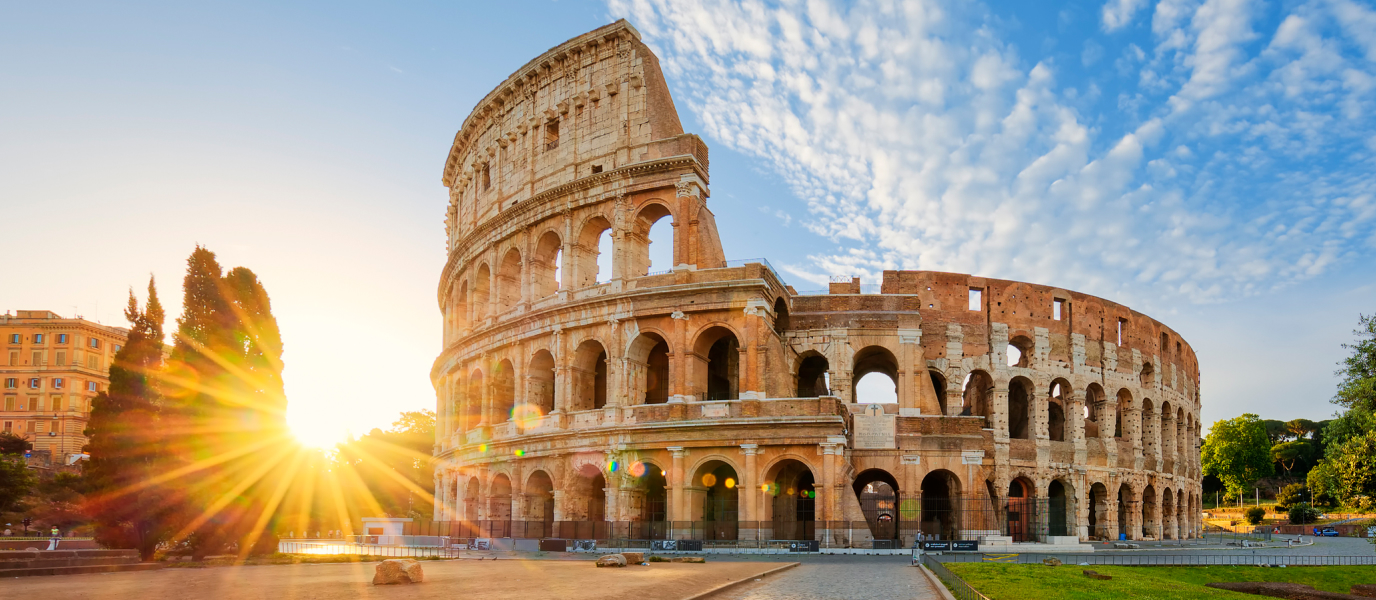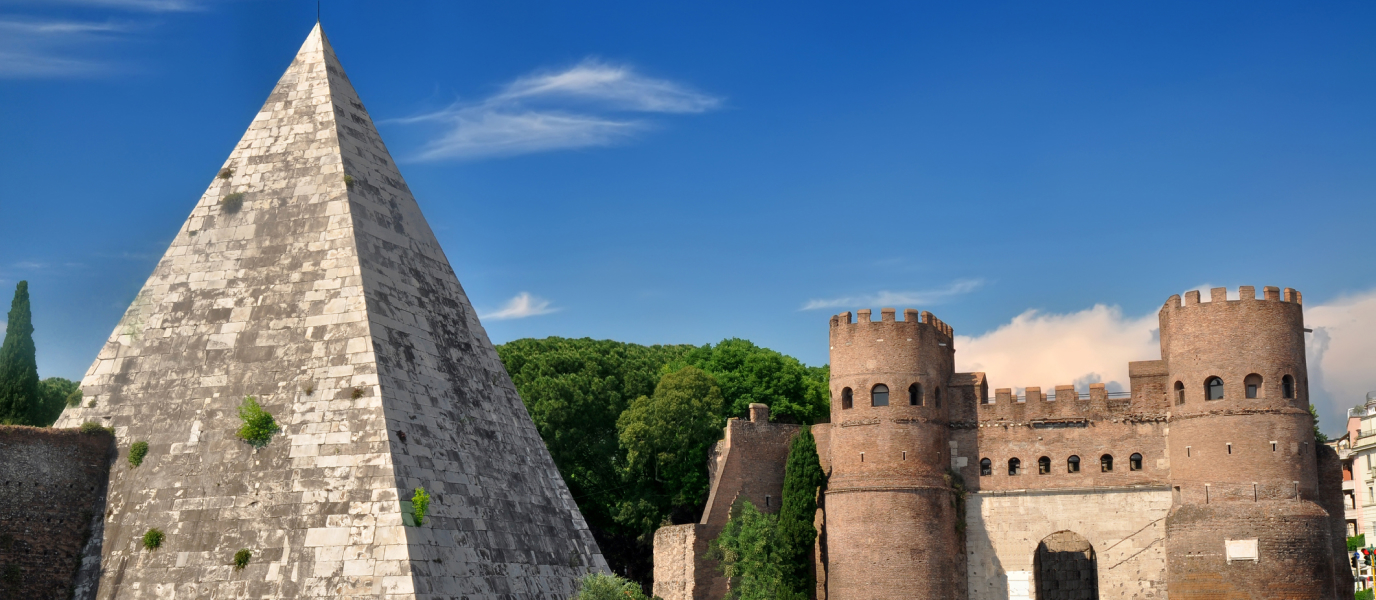Rome is viewed by many as a great open-air museum which never ceases to impress visitors with every step they take. Exploring the city on foot as you breathe in the aroma of freshly-made pasta, bread and coffee is one of the most pleasurable sensory experiences a city can offer – and Rome doesn’t disappoint. As you roam the city, be sure to include some of the most emblematic attractions of the city in your itinerary. These include the Colosseum, the Forum and Castel Sant’Angelo. The Castel is the only monument of the three that has stood the test of time and remained operational for more than two thousand years. The Colosseum and the Forum are ruins but it is easy to imagine the grandeur of the Roman Empire.
Castel Sant’Angelo was built in 123 AD and was refurbished on a number of occasions. It was originally built as a mausoleum for the Roman Emperor Hadrian and his family. The building was not completed during Hadrian’s lifetime so he never got to see the completed work. In fact, his remains were only moved to the Castel years after his death.
The building was converted into a military fortress around 403 to defend the city of Rome from attacks. It also served as a prison at different times throughout history and passed ownership from Roman nobility to the Catholic Church. Today, the building houses a museum where visitors can learn about the history of Rome and the Roman Empire.
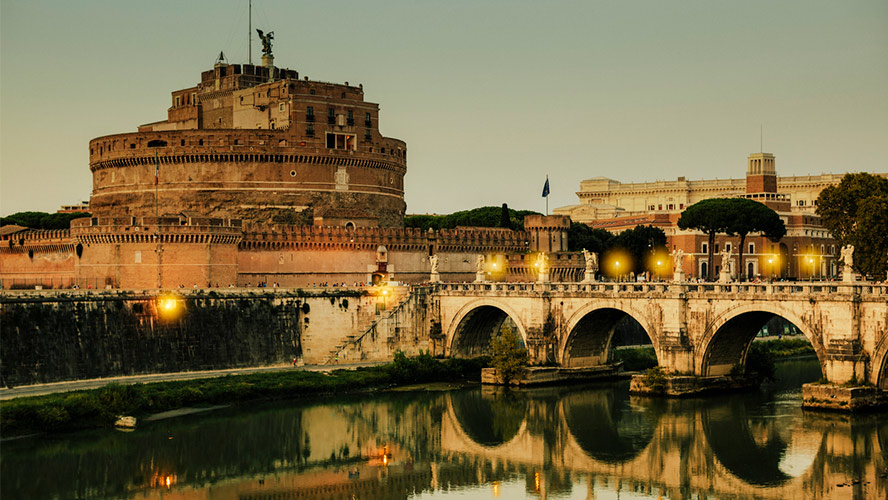
Castel Sant’Angelo
Castel Sant’Angelo is composed of five floors. The first floor houses the Chamber of Ashes and the cells where prisoners were incarcerated. The upper floors include rooms which served as the papal residence, lavishly decorated in true Renaissance style. There is also the Weapon’s room where the noble knights stored their weapons when the building served as a fortress. There are also several relics that date back to when Hadrian ruled.
The Castel was along the shores of the Tiber, in close proximity to the Vatican City. Hadrian commissioned the construction of a bridge, Ponte Sant’Angelo, to connect the city centre to the Castel and it is the only way it can be accessed.
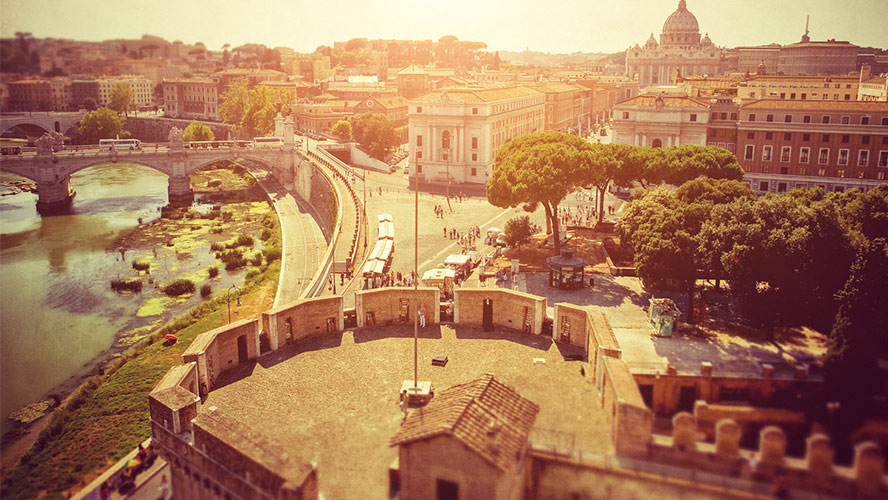
Be sure to head to the rooftop to get sweeping views of the cityscape and the river. The views are especially stunning at dusk with St. Peter’s Basilica of Vatican City in the background.
Ponte Sant’Angelo
Ponte Sant’Angelo was also commissioned by Hadrian to span the Tiber from the city centre to the Castel. The footbridge leads to Castel Sant’Angelo and is the main access ramp to the Vatican City.
Legend has it that Archangel Michael appeared atop the Castel to mark the end of a plague that was devastating Rome. The bridge held different names throughout history but it was finally named Ponte Sant’Angelo in honour of the saint. Pope Clement XVII commissioned Gian Lorenzo Bernini to build ten angel sculptures along the bridge.
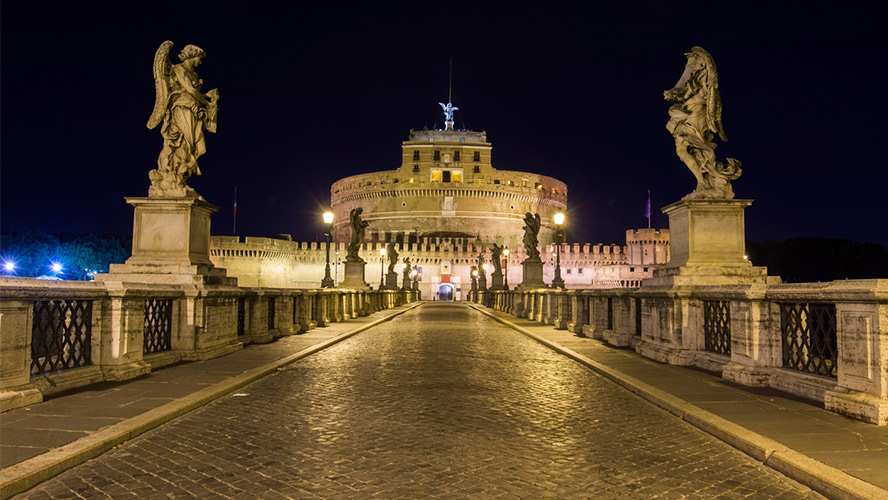
Where to eat near Castel Sant’Angelo
Italian cuisine is one of the most revered and loved in the world. There are innumerable
cafés and restaurants lining the streets of Rome where you can enjoy a nice plate of pasta or a refreshing drink. Here are some of the best restaurants near Castel Sant’Angelo:
- La Fraschetta di Castel Sant’Angelo offers a menu brimming with traditional Italian products and dishes carefully prepared to satisfy the most discerning palates.
- Caffetteria Ristorante Le Terrazze is located right at the top of the Castel and offers picturesque views of Rome. This is a great place to stop for a coffee or a meal as you enjoy the views.
Castel Sant’Angelo offers visitors the opportunity to discover the fascinating history of Rome in a unique setting by the Tiber and the Vatican City. Discover traditional restaurants and shops as you explore the surrounding area of one of the top attractions of the city.




































































